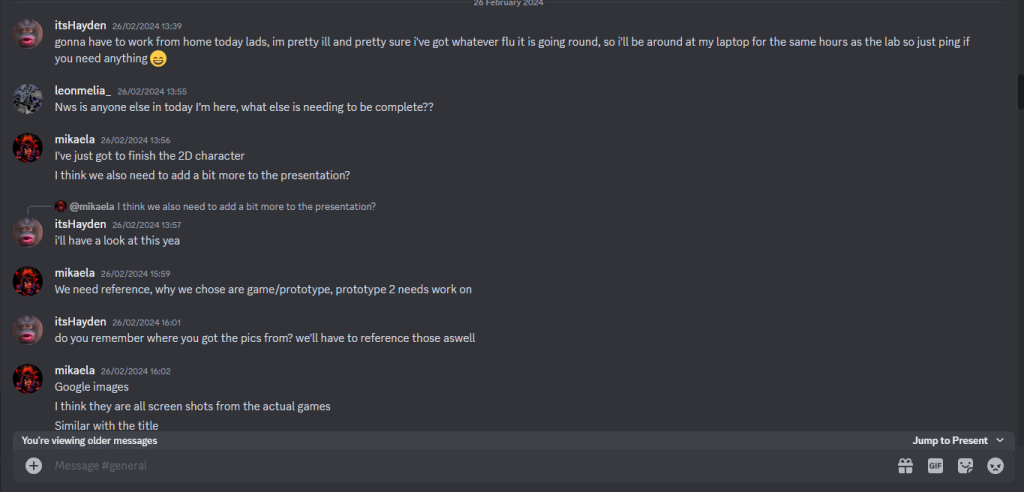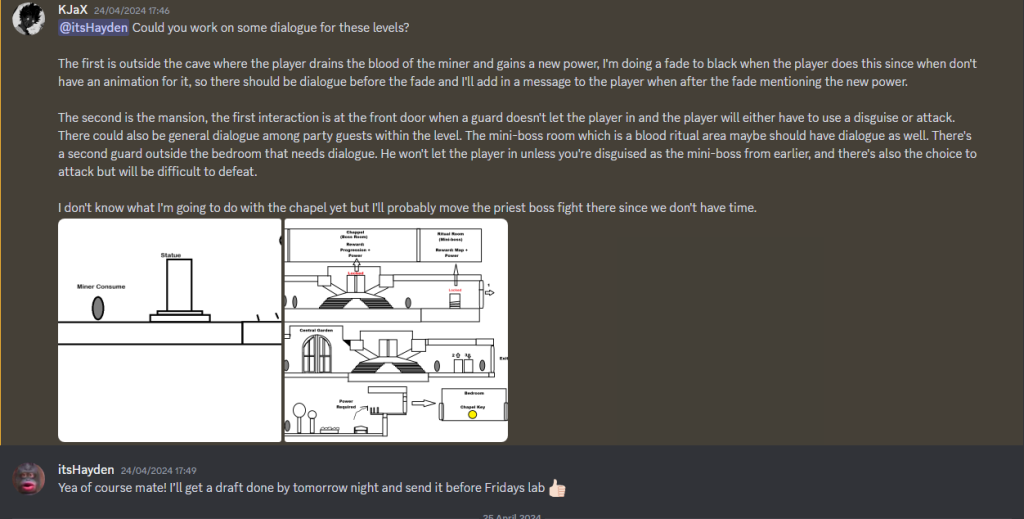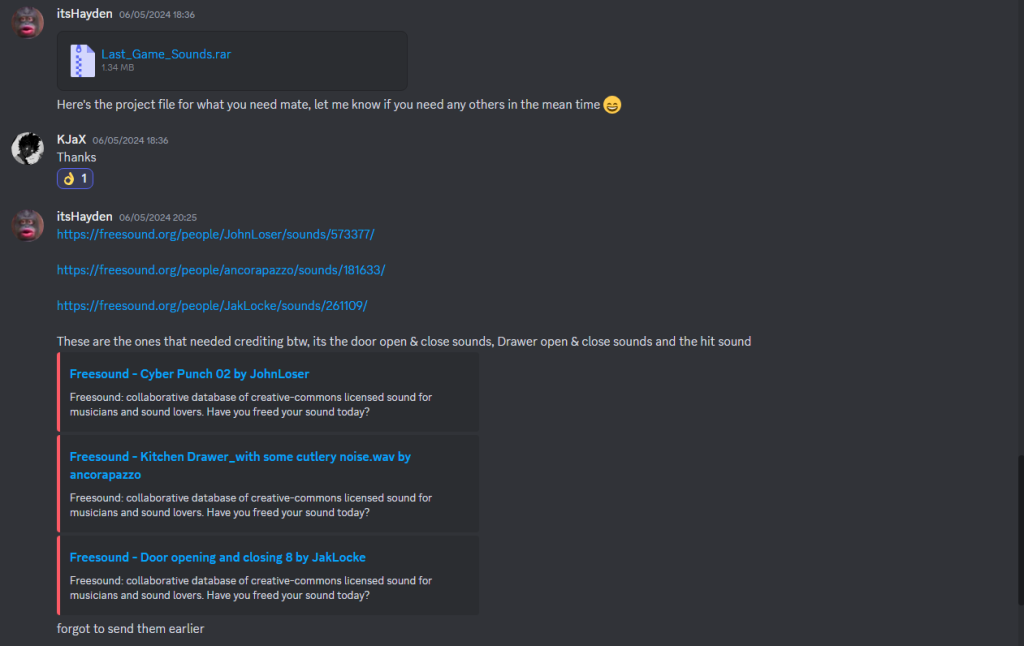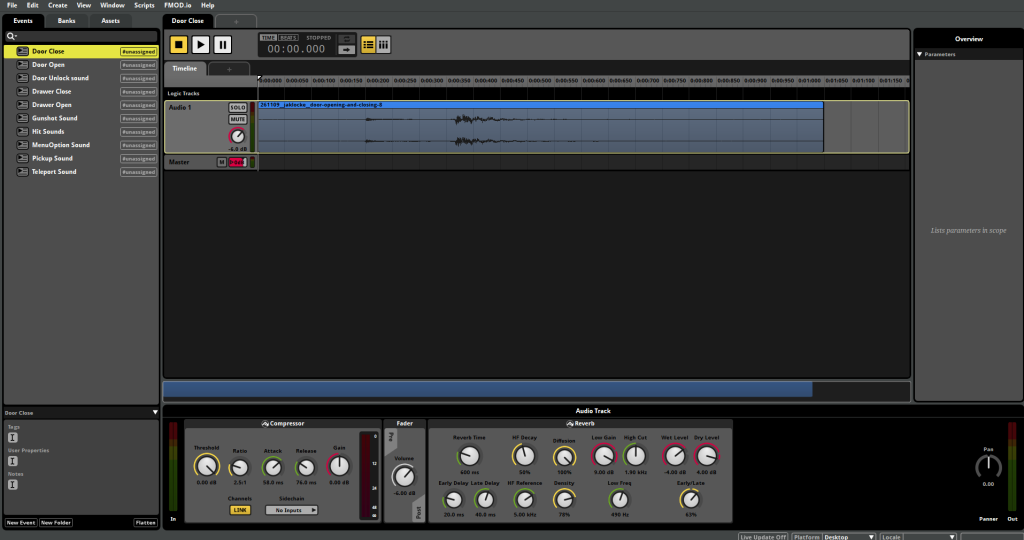Starting the Project
At its core, this assignment was to form a group and create a game based on a brief. But looking deeper, it was a very exciting teambuilding exercise that will give us all a great deal of experience for our final year projects.
After our initial assignment was complete, we knew the game that we wanted to bring to life, this game is called “Caught Red Handed”.
After having a very brief game made for our first assignment, we knew the direction that we were going to take our project. Knowing that, we had the first two labs of this new assignment set to strictly brainstorming ideas. Not that idea generation would not continue further into development, but we wanted a base foundation for the game made that we could further build upon.
A key piece of feedback we received that we all wanted to ideally work on together was our approach to the metroidvania genre. Each game in this genre has a unique trait to it which was something that we did indeed fail to expand upon with our initial concept. Getting something solid brought into our game was something we wanted to think about first and the idea we ended up with was a shapeshift mechanic. This would allow you to transform yourself into bosses you have defeated, which will unlock a unique ability that you can use to access previously locked parts of the map.
My role in the project
When assigning roles amongst ourselves in the initial stages of development, I was given the roles of creating Narrative, Dialogue and Audio for our final product. This would prove to be both exciting and eye opening for me whilst giving me a new found passion for the storytelling inside and outside of video games. As much as I would have loved to have been a larger graphical part of the project, my specialisation is more in 3D projects as opposed to the rest of my group, therefore it was an ideal sacrifice to let them perform where they are more experienced than myself.
Group Communication
I created a discord server for us to use as a general communication platform (as we all use it on a regular basis anyway) so it was convenient in case of anyone not being able to show to sessions or needed to offload some workload. This turned out to be an incredibly successful and useful tool for this project as opposed to relying on something strictly within university confines as it allowed us more of a freedom of speech.

As I was working on the audio for the game, we decided as a group that it would be easier if I waited to do a lot of the sound clips until we had animations and plans confirmed rather than wasting time and rushing ahead. When Andrew was compiling the game, he would send me a private message telling me exactly what he needs either audio or dialogue and give me creative freedom to fill in the blanks. This saved us a lot of back and forth and was a great way to get the work made and sent back as quick as possible.



Outside of just communicating online, we also made sure that we could attend as many of our project labs per week as we could. This was not always possible due to outside circumstances, but we would always let the group know should we not be turning up. During these sessions, we could see what everyone else was working on and keep in mind the progress we were making on the project. This turned out to be incredibly useful, as it could assist in any hesitations we may have had about making a certain aspect of the game due to lack of foresight in that area of development. Among this time, we would have our friday sessions at the end of the week as a general catch up session, to make sure that if anyone needed any assistance outside of their allocation they let us know and we can do some extra work over that weekend to get it completed.
Narrative
Coming up for a narrative for a game we were only making two levels for had me very limited as to identify the scope of what we needed. I did not want to overdo it and give the player answers to everything as there was not much to say; I still wanted them to ask questions, but be able to theorise to themselves a possible outcome to said story. Maggs (2018) points out that “Everything about the game, like the environment, the characters, the rules and the gameplay, can be opportunities to tell the story.” With this in mind, I wanted to drive the game’s direction slightly both through dialogue and the art in the game. The main plot to the story summarised is that you play as a vampiric entity from a currently unknown dimension that has been summoned to do the bidding of those who brought you there. However, your character does not like that and is therefore wreaking havoc on them instead. When the player spawns in the tutorial there is a almost a ritualistic feel and that really resonates as to the surroundings.
Dialogue
Dialogue for me was a brainstorm but I had to figure out what direction I wanted to take it. I wanted the character to be slightly witty but also quite dramatic. I tried to take the personality of the character, who has just been summoned to another realm by a race she feels are below her, and manifest a conversation she may or may not have in the game itself. All I used to create this was Microsoft word in a script like format, and used my imagination to create the conversations.

Audio
The audio was my most major part of the development in terms of impact to the game. I had to get audio clips that were relevant and that could give good ambience to the setting to help bring the game to where we wanted it. To do this I would take a piece of audio from a source like freesounds.org or something I have recorded as an MP3, and brought them into FMOD.

Bringing the sounds into FMOD, I am able to add effects and edit the sounds to drastically change their perceived output to fit the environment. Then once I have modified them as to how I want them, I can send them directly over and have them imported as FMOD files straight into unity.
The first thing I needed to do was add each audio track into a project as a 2D timeline. Once all of the clips have been imported, they are ready to be edited and compressed ready for use in the final game. I had to add each individual effect and modify it inside of the studio editor.
At the bottom of each track, I used any effects I thought necessary to make sure that the sounds were not too high in gain and to make sure that they at least had stereo sound and a pleasant tone to listen to. I used a variety of effects like pitch shifters, compressors, gain controllers & reverbs as the main ones, but they all played a vital part in making the sounds come to life.
The following picture shows the sound clips made as one of three project files. Having less sounds per file just meant that I could compress the file easier and have it easily sent over discord in line with the data limit with file sharing.

I have decided to use one overall screenshot for the FMOD studio as opposed to numerous screenshots that will look the exact same. This is just to save possible clutter on this blog and pictures that are too similar are easy to confuse, especially when there are several of them in close proximity.
What Went Well
This project taught all of us involved so much about group work and having more than one person trying to meet the same deadlines as each other. Having a platform for group communication was a great way to keep to those deadlines and make sure that all work was posted on time. The assigning of roles was especially helpful as it helped us streamline work; that way we were working on multiple aspects of the game at once. For me personally I got to be involved in narrative work on the game and have an impact on the ultimate layout & story for the game. Alongside the fact that I was helping further our project development doing this, it gave me a great new-found passion for the story telling that can be driven to a player in a game.
Thoughts for Improvement
The main point I would have like to improve on as a group would be to have more of a structure for getting our work done for each other. We did get the project done in good time, but we did not set out strict dates or make a proper plan of when we wanted certain aspects of the game by. Doing this, we could have had more time to allocate to the project, and possibly made more intricate details to the levels we already had, or make another level entirely.
Playing ‘Caught Red Handed’
Please feel free to test the game by downloading the Zip file from the Itch io link below. Inside this zip file you will find an MP4 file that will show a playthrough of the game recorded by Andrew, our project manager.
https://gh0stly-21.itch.io/caught-red-handed
References
Maggs, M (2018), The Art of Video Game Storytelling 101, accessed 06/05/2024, Available online: https://medium.com/@brooke.maggs/art-of-video-game-storytelling-101-84a36ceb365d#:~:text=Game%20writing%20is%20a%20type,extremely%20collaborative%2C%20technical%20and%20iterative.